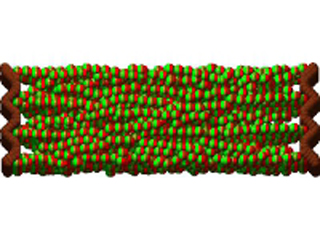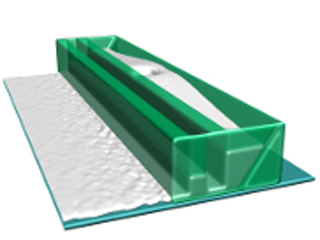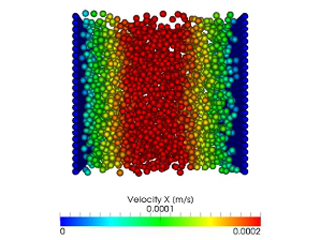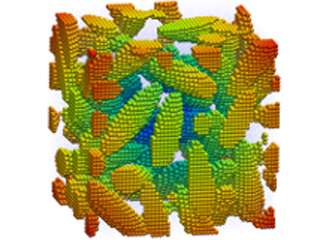Suspension modeling
Options
Particulate suspensions are used in many technical applications and industrial manufacturing processes. The macroscopic properties of a suspension, as the flow behavior or the viscosity, have usually a substantial influence on the quality of the final product. These properties on the other hand are closely linked to the microscopic aspects (e.g. the motion of a suspended particle in the surrounding fluid) which are not easily accessible through experimental investigation. The simulation is in this case a good way to gain insight into what is happening in the suspension and may help to get better understanding of these multi-scale interactions between the microscopic and the macroscopic size scales. An additional benefit of the simulation is that it offers the possibility to conduct a parameter study with a wide range of material and process parameters with relative ease compared to an experimental study.
Four different methods to simulate suspensions are available in SimPARTIX®: DEM, SPH, DEM-SPH coupling and SPH with rigid bodies. The methods differ in nature and are suited for different application and size scales. For each case the most fitting method has to be chosen by taking into account the following characteristics:
material and process parameters (e.g. system size, particle shape)
global parameters (e.g. flow velocity, viscosity)
parameters and aspects under investigation (e.g. motion of particles in the suspension).
Often a multi-scale approach is required to be able to fully describe a process or an application and to take all governing parameters into account (e.g. tape casting).
DEM
In the pure DEM approach only the solid particles and their interactions are simulated. The fluid is not explicitly simulated but can be taken into account by describing the flow field analytically or using the results of CFD simulations to apply the forces arising from the flow on the particles. Additionally, force laws like for example the Stokes’ law can be used to describe the influence of the fluid on the particles. Due to the low complexity of this approach it is well suited for big systems with high amount of solid particles.
Examples: drying, magnetorheological fluids
SPH
The suspension is described as a continuous fluid using SPH which has the properties of the suspension. Through experimental investigation the material behavior of the suspension is determined and used in an appropriate material model thus making it possible to simulate the non-Newtonian behavior of many suspensions (e.g. shear thinning, shear thickening, thixotropy). So the dependencies on shear rate and shear history are taken into account. This method is applicable to simulations of systems on the macroscopic scale and can be used to describe a process or an application integrally. In contrast to the other approaches no information about the behavior of the individual solid particles can be obtained.
Examples: tape casting, screen printing
DEM-SPH coupling
In this method both the fluid (SPH) as well as the solid phase (DEM) is explicitly taken into account. The coupling is realized by a so called “locally averaged Navier-Stokes” approach. Additional forces are added to the SPH and DEM equations to take into account the interaction between the two phases. This allows for a simulation of a suspension including the interactions between fluid and solid particles. Consequently it is possible to get information about both the macroscopic flow field and the motion of the individual solid particles. Due to the explicit description of the solid particles this method is computationally more expensive than the pure DEM approach, but compared to SPH with rigid bodies it is still possible to calculate macroscopic system in many cases.
Example: Magnetorheological fluids
SPH with rigid bodies
The solid particles are rigidly linked clusters of SPH-particles surrounded by a fluid (SPH) in this method. In contrast to the DEM-SPH coupling, due to the cluster approach this method is not limited to spherical solid particles and thus offers the possibility of describing the solid particles with a high level of detail. Due to this high level of detail this method requires a high resolution leading to increased computational cost. Therefore this method is primarily suited for the simulation of meso- and microscopic system where the motion and orientation of the solid particles is the principal interest.
Examples: Wire sawing, tape casting
 Fraunhofer Institute for Mechanics of Materials IWM
Fraunhofer Institute for Mechanics of Materials IWM


